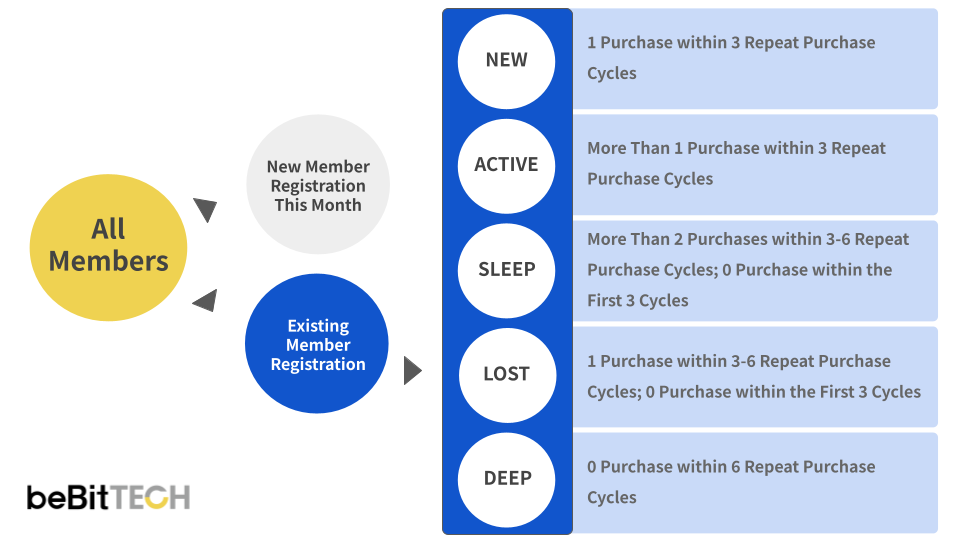Creating a great customer experience is one of the key factors for the success of any e-commerce brand. In a highly competitive market, how a brand differentiates itself and attracts target consumers is a critical question that every e-commerce marketer needs to consider. By leveraging the concept of 'personalization segment marketing,' brands can launch more personalized marketing campaigns that spark customer interest and increase loyalty.
Traditional segment marketing models rely on basic customer demographic data. However, today's e-commerce environment requires more than just age, gender, and other demographic characteristics. With the growing accumulation of data on e-commerce platforms, brands can use data analysis to gain deeper insights into customer behavior, preferences, and interests, enabling more personalized segment marketing.
The implementation of a Customer Data Platform (CDP) can help brands record and analyze customer preferences and interaction behaviors. This helps brands understand customer purchase journeys, improve customer loyalty, and develop precise, personalized marketing strategies.
How can brands excel in segment marketing in the new retail era? Read on to find out.
What is Segment Marketing?
Segment marketing involves ‘categorizing and targeting specific audience segments.' Typically, several primary dimensions are selected to further classify and segment all members.
The most common approach to segment marketing is through customer personas and purchasing behaviors. For example, in the banking and financial industry, products are segmented based on customers' financial status and life planning stages. This leads to categories such as young professionals, middle-aged high earners, and stable retirees, each requiring different investment products based on varying risk levels.
The RFM model segments members based on three dimensions: Monetary (total spending), Frequency (purchase frequency), and Recency (time since the last purchase). For example, a brand might use ‘annual cumulative spending' as a reference dimension and set multiple tiers to identify high-spending groups. If the team's goal is to quickly increase revenue in a short period, they can prioritize communication with these high-spending groups to achieve rapid sales conversion.
In addition to using single dimensions, brands can combine two or more dimensions for advanced segment marketing. For example, e-commerce brands often use ‘purchase repeat purchase cycle' combined with ‘purchase frequency' to segment members. First, calculate the repeat purchase cycle for each member, then segment them based on their purchase frequency within that cycle.
The ‘NASLD Segmentation Model' in OmniSegment CDP follows this logic, using both consumption cycle and purchase frequency to calculate customer activity levels and segment members accordingly. NASLD stands for New (N), Active (A), Sleep (S), Lost (L), and Deep (D). Both N (New) and A (Active) customers are those within three repeat purchase cycles, with N being customers who have purchased once and A being customers who have purchased more than once. Customers with different purchase frequencies within this period represent varying purchase probabilities and loyalty levels. By utilizing such segmentation, brands can more accurately tailor their marketing strategies and communication content to meet the needs of different customer groups.

Why Practice Segment Marketing?
Marketing resources are limited for any brand, and every campaign requires a certain amount of money, time, and manpower. Given the differences in customer revenue contributions and activity levels, an equal distribution of resources cannot maximize the return on investment. Whether the team's resources can be effectively concentrated and achieve the marketing goals of different campaigns will largely depend on the precision of segment marketing.
Therefore, segment marketing with a customer-centric approach requires brands to focus on the following key points:
- Define Target Audience: Based on the brand's positioning and target market, select a potential audience group with development potential.
- Collect Data: Use a Customer Data Platform (CDP) to gather customer data, including purchase behavior, preferences, interests, and both X-Data (experience data) and O-Data (operational data) to build customer profiles.
- Develop Personalized Customer Management Strategies: Through segment marketing, brands can manage customers more accurately, thereby increasing customer loyalty and brand value. For different target segments, brands can design various customer management strategies, such as offering exclusive perks and discounts to high-loyalty customers or creating attractive deals and free shipping options for new customers.
- Utilize Data Analysis to Enhance Effectiveness: Through data analysis, brands can understand the consumption habits and purchasing preferences of different segment targets, enabling more effective segment marketing and customer management. Personalized marketing messages are more likely to resonate with members, creating mutual value between the brand and its members. Effective segment marketing can increase member activity and elevate the value provided by the brand to its members and vice versa.
Four Key Elements for Successful Segment Marketing in E-commerce
In the e-commerce industry, the most common basic segmentation method is based on the brand's membership tier system, such as basic members, gold members, and VIP members. Additionally, segmentation can be done based on other basic attributes (age, occupation, marital status) such as family groups, single office workers, and retirees, to predict and understand the potential needs of these consumer groups.
To extend the breadth of segmentation types, behavioral data is also a common basis for segmentation in e-commerce. Brands can segment customers into new and returning customers based on whether they made their first purchase in a given month. Website interaction behaviors can also be used for segmentation, grouping customers who browse or purchase specific categories and estimating the extended needs of these audiences based on the nature of the categories.
Moreover, the weight of dimensions in the same segmentation model can vary based on product nature and marketing goals. For example, in the RFM model, some industries value frequent purchase behavior more than the amount spent (such as platform transaction products). Therefore, segmentation would prioritize purchase frequency (Frequency) and recent purchase time (Recency). Conversely, for industries with high average order values and low repeat purchase frequencies (such as furniture and home decor brands), increasing customer spending (Monetary) is more critical.
The definition and basis of segmentation often stem from the team's marketing goals. Thus, different segmentation methods will lead to varied key performance indicators (KPIs) for observation.
Good customer management encompasses everything from strategy planning and campaign layout to communication content, channel selection, and target audience segmentation. It relies on comprehensive member data and customer-centric segment marketing plans for success. At the execution level, using data to create customer profiles, identify target groups, and conduct segmentation based on purchasing behavior is essential. However, this must be paired with a long-term member management approach. During the annual marketing activity planning, it's crucial to simultaneously consider member management plans and resource allocation. When marketing activities and member management are conducted in tandem, they align to product results that can be used to refine subsequent member management strategies, continually optimizing the approach.
Every member is hard-won. After acquiring and retaining new members, the goal is for returning customers to remain loyal, make frequent purchases, and engage with the brand regularly. This loyalty depends heavily on segment marketing strategies. Effective segment marketing will significantly enhance the efficiency of customer management, driving long-term success.
Conclusion
The success of a brand's marketing goals often hinges on the precision of segment marketing. The foundation of segment marketing relies on the brand's ability to thoroughly understand customer profiles. How can brands achieve a 360-degree view of their customers? The most recognized e-commerce solution, OmniSegment CDP, consolidates customer attributes, behavior data, and interests to become a brand's one-stop data engine. By utilizing condition filters and logical algorithms, it automatically generates segment combinations, aiding brands in executing more personalized segment marketing strategies.
beBit TECH is Asia's leading consulting technology company. As the iconic subsidiary of Japan's prestigious DX consulting company beBit Group, beBit TECH integrates an in-depth understanding of customer experience and cutting-edge yet user-centered technology.
With profound digital business strategies, the no-code designed AI customer data platform (CDP) and effective customer success insights, beBit TECH provides an all-in-one solution that includes consulting service, SaaS, and data analytics for DX and CX.
beBit TECH's vision is to create a Trillion Smile society.
Boost brand value and achieve sustainable growth with beBit TECH's AI-powered SaaS products, data consulting, and business strategy services.




